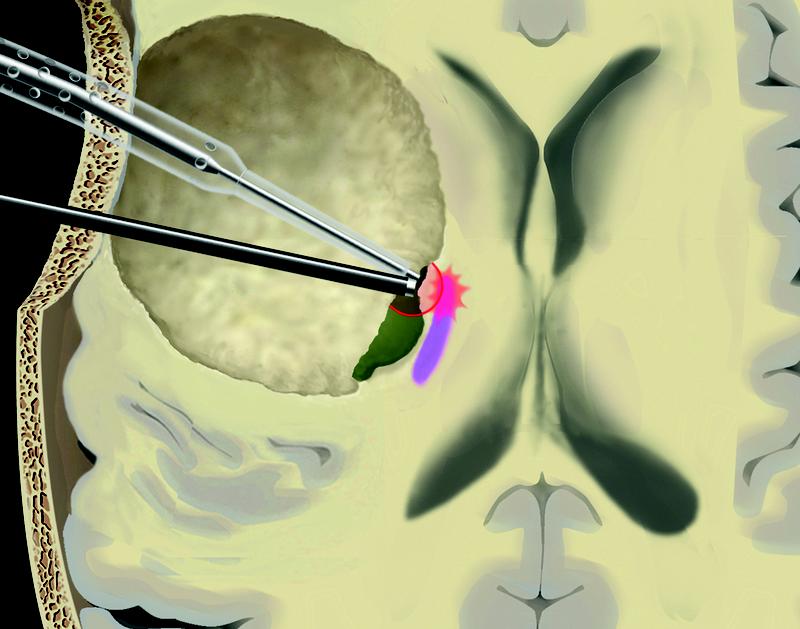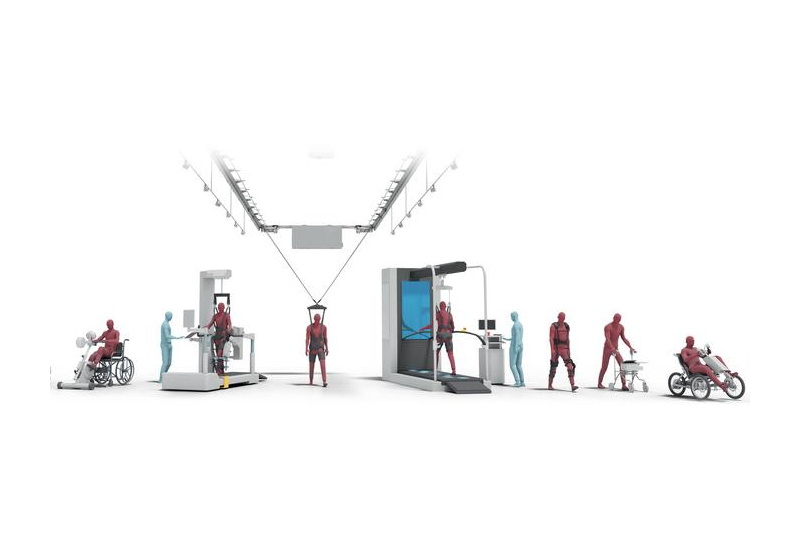

Illustration: The hybrid probe (black) uses an acoustic signal to tell the surgeon how close they are to motor pathways in the brain during an operation (purple).
Department of Neurosurgery, Inselspital, Bern University Hospital
Operations close to the brain’s motor centres are common (one in three brain tumours) and risky. If the surgeon has to remove a tumour from this area, incidental damage to motor pathways risks causing the patient to lose the use of an arm or leg. In order to prevent this, in 2014 neurosurgeons at the Inselspital in Bern developed a new safety instrument – the first of its kind in the world – which enables surgeons to operate near motor pathways or centres without endangering the safety of the operation.
Long-term study proves patient safety
Neurosurgeons in Bern have already used this method to operate on more than 200 patients, 182 of whom were included in a long-term study. This study showed that the surgical instrument permits enables tumours to be removed from areas close to the brain’s motor centres and pathways at low risk, significantly reducing the chance of long-term paralysis.
More specifically, the rate of permanent restrictions in mobility after the operations conducted in Bern was just 3%, one of the lowest in the world. The procedure also excelled at an international level, with Dr Kathleen Seidel and Professor Andreas Raabe receiving the prize for the best paper at the annual meeting of the European Association of Neurosurgical Societies in Madrid on 21 October.
“Our experiences from a large number of operations led us to develop this new instrument, which has transformed tumour surgery in this critical region,” says Professor Andreas Raabe, Physician-in-Chief of Neurosurgery. “We are very honoured to receive this award, as it reflects the outstanding results we have achieved in brain tumour surgery in Bern with our new hybrid probe.”
Bern’s hybrid probe soon to be used worldwide
The new surgical instrument can suction out the tumour tissue while stimulating the motor centres with an electrical radar, which tells the surgeon how close they are to these areas. In order to alert him or her to potential dangers, it uses acoustic signals similar to those found in electronic parking aids. The instrument therefore allows surgeons to operate while receiving constant feedback on their position, resulting in considerable improvements to patient safety.
Study author Dr Kathleen Siedel explains the instrument’s practical benefits: “Knowing exactly how close you are to a motor pathway leads to a significant reduction in surgical risk.”
Neuroscientists at the Inselspital in Bern have dedicated years of their work to improving brain tumour surgery. They teamed up with the German company Inomed to develop the hybrid probe, which can create a risk map in real time. This safe surgical instrument has now been approved by the medical authorities and will soon be in use all around the world.
Further information:
Professor Andreas Raabe, Director and Physician-in-Chief of the Department of Neurosurgery, +41 (0)31 632 35 35, Andreas.Raabe@insel.ch.
Prospective study of continuous dynamic mapping of the corticospinal tract during surgery of motor eloquent intraaxial brain tumors, Kathleen Seidel, Jürgen Beck, Philippe Schucht, Andreas Raabe, Department of Neurosurgery, Inselspital, Bern University Hospital, Bern, Switzerland.
http://www.insel.ch/fileadmin/inselspital/users/ueber_das_Inselspital/Mediendien…












